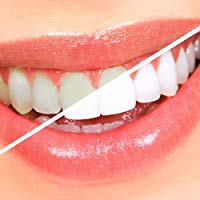TRENDS IMPACT JUST about every aspect of life, from slang and fashion to which toys are collectibles this year and which fad diet everyone’s aunt is doing. Most trends are harmless symptoms of an ever-evolving society and culture, but when they affect the ways we take care of ourselves, they can become serious. In recent years, do-it-yourself teeth whitening has been a “trendy” topic, so let’s take a look at a few of the more popular methods.
Charcoal Versus Tooth Enamel Teeth Whitening
As counter intuitive as it seems to rub black powder on your teeth and expect them to become whiter, the rationale behind the idea makes sense. Charcoal is extremely porous and absorbent, and has been used even in hospitals to safely neutralize toxins. In theory, it could do the same for your teeth.
However, charcoal isn’t just porous, it’s also abrasive. Even as it absorbs harmful compounds from your mouth and disrupts bacterial populations, it could also be scraping away your enamel, doing more harm than good. Until we know more about the effects of charcoal on teeth, it’s safer to give that home remedy a pass.
Lemon Juice: Dissolving Stains Or Dissolving Teeth?
The enamel on your teeth is the hardest substance in your body, but it is extremely susceptible to erosion by acid. Your saliva keeps the pH in your mouth balanced to protect your enamel, but any time you eat or drink something acidic, that pH is disrupted and your teeth are vulnerable. Using lemon juice on your teeth in hopes of whitening them is, therefore, likely to cause a lot of enamel erosion, and once that enamel is gone, it’s gone for good.
Oil Pulling Teeth Whitening: An Ancient Folk Remedy
Oil pulling involves swishing oil (typically coconut, sunflower, sesame, or olive oil) around in one’s mouth for up to twenty minutes. Proponents of oil pulling claim it has numerous health benefits, including teeth whitening, but the American Dental association doesn’t recommend it because there is no scientific evidence to back up these claims.
Using Strawberries And Bananas For Teeth Whitening
Strawberries do contain some citric acid, but they also contain malic acid (particularly when ripe), which actually can give your teeth a whiter appearance. Bananas contain potassium, magnesium, and manganese, all of which promote healthier teeth and can help remove surface stains. So these two do-it-yourself teeth whiteners may actually provide some benefit! Both fruits still contain sugar, however, so you should still brush your teeth with dentist approved toothpaste after eating them.
Curious about those whitening mouthpieces that emit blue light you see all over social media?
Watch the video below to learn whether or not they’re really effective:
Stick To The Science
Trends like charcoal toothpaste and lemon juice mouthwash will come and (hopefully) go, and occasionally we’ll discover remedies that do have benefits, like strawberries and bananas, but the best benefits to our teeth will always come from dentist-approved methods. Brush your teeth twice a day for two minutes and floss once a day, avoid sugary drinks and snacks, and schedule regular dental appointments.
If all of these good habits aren’t keeping your teeth white enough, talk to us about safe, professional whitening options. Healthy smiles are beautiful smiles!
Schedule A Consult For Teeth Whitening in Denver
Have you been considering getting teeth whitening treatment? Give our downtown Denver dental office a call, and schedule an appointment today. We’re excited to work with you to whiten your teeth and give you the smile you deserve.
The content on this blog is not intended to be a substitute for professional medical advice, diagnosis, or treatment. Always seek the advice of qualified health providers with questions you may have regarding medical conditions.




